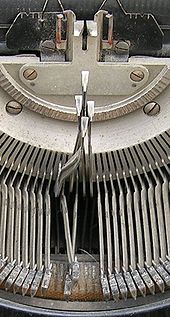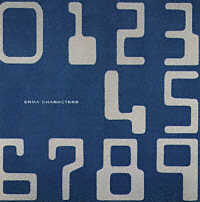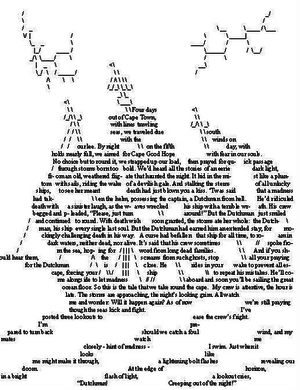User:Inge Hoonte/references
Interruption and silence on the internet
"(...) the terrains of interruption and silence. Each of these areas is going through a transition. Each signals changes that are starting to bubble up in other areas of the Network. The terrain of silence, for the purposes of this discussion, will be defined as unvisited web page locations. (...)
For the purposes of this discussion, the this terrain will be defined as the the set of Network-attached devices you’ve given permission to ping you when something important occurs. The classic examples are the doorbell and the telephone. Each was originally anchored to a specific location and would signal you with a bell when they required your attention. The telephone went mobile, and then was subsumed into the iPhone as a function of a personal computing device. The bell that signals a telephone call is still there, so is the alert that tells you a text message has arrived. But now there are a whole series of applications that will send you an interruption signal when something has occurred. A stock hits a certain price, a baseball team scores a run, you’re near a store with a sale on an item on your wishlist, or someone just commented on an item in your Facebook newsfeed."
QWERTY
History of QWERTY keyboard, designed to minimize typebar clashes.
Layout first model by Christopher Sholes, 1867:
1 3 5 7 9 N O P Q R S T U V W X Y Z
2 4 6 8 . A B C D E F G H I J K L M
Letters that are commonly used right after one another are placed very close together, causing the long metal arms, or typebars, to clash into each other. He then spent the next six years reworking the design, sold it to Remington, who made some adjustments which came close to the current QWERTY keyboard. The Remington No. 2 in 1878 included a shift key for upper and lower case.
ERMA
ERMA, the Electronic Recording Method of Accounting, digitized checking for the Bank of America by creating a computer-readable font. A special scanner read account numbers preprinted on checks in magnetic ink (1959)
Toni Ronkko
I came upon Toni Ronkko's deleted code samples for his Master's thesis. This Finnish scholar, who also runs a website with code samples for video games, coded a visual graphic simulator for a rocket ship and an air plane. I appropriated some of his code into the code poem chapter 5: simulated travel.
Susan Hiller
'In a way, this is a collection of detours around the subject, circling in on it. It's like a drawing, where the negative space is as important as the marks, and where individual marks don't mean much on their own. In the process, I've found my lines of thought converging or overlapping to define a tentative shape that may represent a sighting or wish for something that will emerge more clearly in the future. (p33)
1. all my ideas begin as part of the necessity for truth-telling in art practice;
2. not being entirely at home in the ordinary, dominant languages make this less than simple. At the same time, it gives me a wide range of options; and
3. the greatest self-betrayal for an artist is not indulging in anarchic or careless opposition to rational politics, but in fashioning acceptable SEMBLANCES of truth.' (p117)
Susan Hiller, The Provisional Texture of Reality: Selected Talks and Texts, 1977-2007, ed. Alexandra M.Kokoli (JRP Ringier, Zurich, & Les Presses du réel, Dijon, 2008). ISBN 978-3-905829-56-3.
Digital Poetry
There are many types of 'digital poetry' such as hypertext, kinetic poetry, computer generated animation, digital visual poetry, interactive poetry, code poetry, holographic poetry (holopoetry), experimental video poetry, and poetries that take advantage of the programmable nature of the computer to create works that are interactive, or use generative or combinatorial approach to create text (or one of its states), or involve sound poetry, or take advantage of things like listservs, blogs, and other forms of network communication to create communities of collaborative writing and publication (as in poetical wikis).
Illustration: [The Flying Dutchman]
Judd Morrissey
Former Associate Member of Chicago-based performance group Goat Island
'Precession is a data-driven networked poem being developed simultaneously as both a large-scale installation and live performance. The work makes use of original writing and real-time data collection to create visual-poetic arrangements based on inquiries into architecture and the night sky. The piece mixes databased sources, real-time interruptions, and algorithmic composition in an evolving ecology.' >> interesting combination of live performance and live developed text
The Error Engine'We are in the process of creating an installation of the engine in which audience members and remote participants are asked to use their cell phones to send text messages that plant story seeds into the engine.' >> would be interesting to do this during live performance. Improv influenced and adapted by audience.
'The Jew's Daughter is an interactive, non-linear narrative, a storyspace.' >> Go to book page and click on 'Page' to read. I like the changing text generator. Have seen this live, as a performed projection (?). I believe there was a sound track. I'm not sure how interactive this is in the end? The reader/user mostly clicks, doesn't insert itself in the story.
Circulation Room >> Generating poetry combined with video imagery. This is the projected aspect of a live performance. It's not that interesting to watch it on the web, I think you really need the live aspect of bodies physically being in the space with the projection, responding, interacting.
10/22 Meeting with Olia
Talked about Net Artists
irational.org
Chalk text in public space referenced to website address, where visitor is asked where you found the text, why you think it was written.
Olia's online newspaper project



